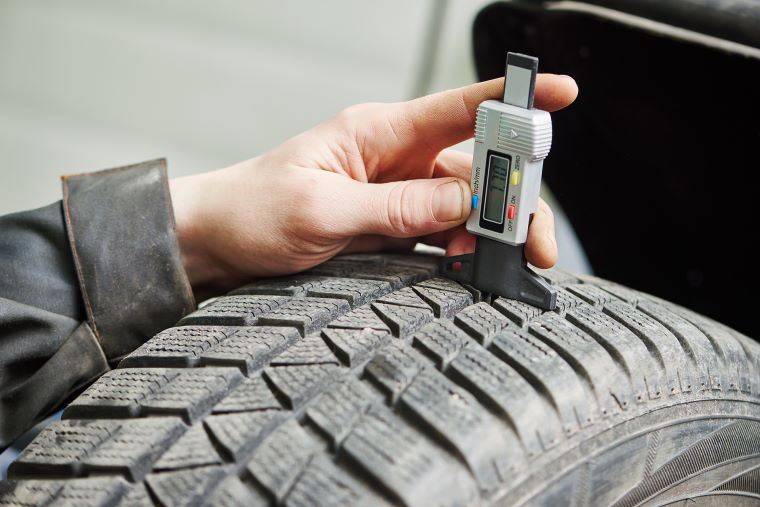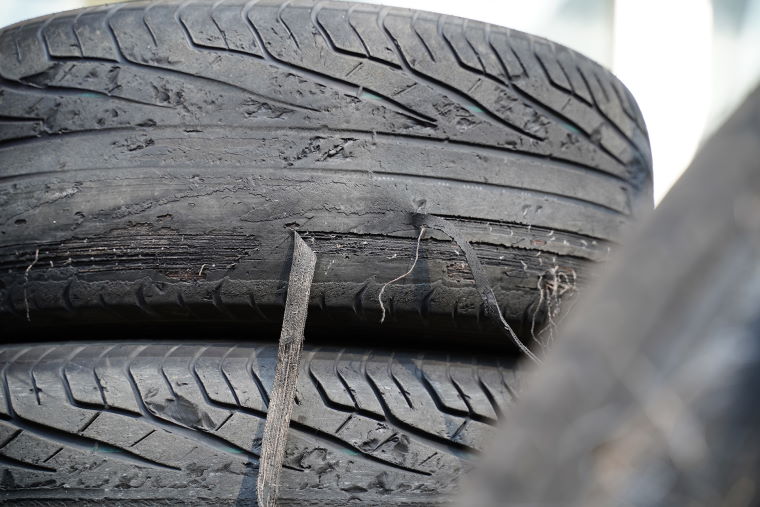When Should I Change My Tyres?
Bradley Jando | Wednesday 7th July 2021 3:17pm

They might seem small, but when it comes to safe driving, having adequate tyres is one of the most important things for your vehicle. Think about it – they’re the only point of contact between you and the road. It’s through the friction between the tyres and the road that you’re able to move, steer, and stop. So something going wrong with your tyres can make what would have been a pleasant drive a very unpleasant, dangerous experience.
Knowing when to change your tyres is crucial for your own safety, but also for the safety of everyone on the road as well as that of your passengers. But how do you know when to change your tyres?
Check your tread depth

Your tyres’ tread pattern is designed to channel water from the road away from your tyres so that they can still maintain contact with the road surface. How deep the tread grooves are directly affects how much water they’re capable of dispersing. So when the tread depth gets too low, you become at serious risk of aquaplaning.
This is when a pool of water is too deep for your tyre grooves to displace, so your vehicle skids across the top of the water when driving at speed.
As such, regularly checking your tread depth is really important. Luckily, it’s also really easy! If you don’t have a tread depth gauge, you can use the 20p trick. You simply put a 20p coin in the groove of the tread, and if you can see the border of the coin then your tyre’s likely under or nearing the legal limit. Repeat this test around the whole circumference of the tyre and across the whole middle section.
The legal minimum tread depth is 1.6mm, but many tyre manufacturers recommend you have your tyres changed with 3mm of tread left. This is because most puddles on a road are deeper than 1.6mm, so waiting until the absolute limit – especially during winter – means leaving yourself very liable to aquaplaning.
Monitor your tyre age
Tyres can be fine up to 10 years from production, but when your tyre’s 6-7 years old you should keep an eye on its condition. On the other side of the coin, your tyre could be quite new, but if it’s been sitting static for a long period of time it may also need replacing. This is because the rubber compound in the tyre can dry out and split with the expansion and contraction that weather conditions cause.
It’s usually a good idea to take a vehicle for a drive if it’s been sitting for more than a few months as it’ll warm up the tyres and help to stop them drying out.
There’s no absolute limit to tyre age, and – if stored in the recommended conditions – a tyre can be considered ‘new’ when sold up to five years after the date of manufacture. If you see signs of splitting then you should have your tyres checked by a professional as soon as possible.
It’s worth remembering to check your spare tyre, too!
What is the average life of a tyre?
The life of a tyre is determined by several factors, including weather and driving conditions. Some tyre manufacturers claim that a tyre should last 20,000 miles, but the consensus among tyre manufacturers and safety organisations is that vehicle owners should replace their tyres every 5-6 years.
Is there any visible damage?

If there’s any visible damage to the tyre then you should have it inspected. Damage could be the cracking mentioned above, but also things like uneven wear along the tyre’s face, bulging in the sidewall, chunks missing from impacts, or even sharp objects like nails lodged in the rubber.
Many punctures can be fixed if they’re towards the centre of the tyre’s face. But if it’s too close to the sidewall then it is unsafe to repair and the tyre should be replaced.
Concerned about your tyres?
If you’re concerned about the condition of your tyres, book your car in for a free tyre inspection at your local Kwik Fit. Or, in the meantime, speak to one of our experts with any questions you might have about your tyres.
Any facts, figures and prices shown in our blog articles are correct at time of publication.
Featured Articles
Is it Illegal to Drive With One Headlight?
Saturday 19th July 2025
Wondering if it’s illegal to drive with one headlight? Learn about the safety risks and penalties of illegal blown bulbs and why you should fix them promptly.
Air Con in EVs & Hybrids: Experts Answer Your Questions
Monday 30th June 2025
Does air con drain EV batteries? Can you use the air con while charging an electric car? Find out the answers to these questions & more from Kwik Fit’s experts.
Why Is Your Car Making a Noise? Fixes & Tips
Friday 13th June 2025
When your car starts making unexpected noises, it can certainly be quite disconcerting; it may be nothing to worry about, but here’s what you need to know.









